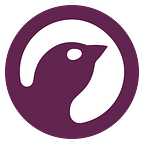Ant-inspired transport, medicine and robotics
Swarms of animals can appear to display intelligence beyond the individual. Scientists are now borrowing their tricks to optimise complex systems and create cooperating, self-healing robots.
In 10 seconds? Ants work together to achieve seemingly impossible tasks, whilst birds and insects fly together without colliding — researchers are applying this “swarm intelligence” to improve traffic flows, finance and even wound healing. (Read the science here)
Wait, you mentioned medicine? Ants’ behavioural rules open up new ways to understand how cells act in the body to heal wounds. Computer scientists have started to develop algorithms to programme cells to mimic the animals’ self-assembling principles, but it’s not been tested in the biology lab yet! (Read a recent review of the theories)
What are these ant rules? Well, although they don’t understand the group’s goals, collaboration is the key. Here’s an example: last summer Hurricane Harvey devastated Texas, but fire ants survived the floods by forming dense, waterproof rafts. Ants can build bridges with their bodies that act as highways to food. (Find out how ant bridges can dynamically relocate)
How can we crack this ant code? Researchers discovered that ants leave pheromone trails when searching for food. They drop a different scent on their way back if they’ve found food. This helps other ants follow the most fruitful trail, providing a ‘cost-effective’ solution to the colony by finding the optimal route. (Read more)
What are the practical applications for us? These ant-inspired methods are already used in sending data packets through less congested network routes and assigning gates for airplanes. This type of ‘algorithm’ can also help autonomous vehicles find the shortest routes. (Learn more about ant colony optimisation algorithms)
So will driverless cars climb over each other in a jam? Of course not! They will find the best route based on the ant model, but will copy the way birds or bees fly to avoid collisions. The trick here is what individuals do in a flock: they move as one by maintaining set distances between each other. No one individual has to be aware of what the whole group is doing. (Read more)
OK, I can’t hold back, how will this lead to swarms of robots? This is the coolest part! By using the principles mentioned here, we can improve the abilities of ‘multi-agent robot systems’, or in other words, swarms of simple, cooperative robots. Like ants, they’ll self-assemble to form functional structures and perform group exploration, allowing them to operate in dangerous places such as in search and rescue missions. If some of them become damaged or destroyed, the swarm would still be able to re-organise like those collaborative ants. (Read more about robotic self-assembly here)
How swarm intelligence helps airplanes quickly find a gate
The ant model was tested and used by US-based Southwest Airlines to improve traffic at Phoenix International Airport, to ensure quick flow-through of planes.
To achieve this, a computer model was created, making each plane ‘remember’ how long it took to approach or leave gates. The coders likened the aircraft to foraging ants leaving ‘virtual pheromones’ on the way.
Planes learned to forget ‘slow’ gates and remember ‘fast’ ones minimising waiting times on the tarmac.This research was curated by Chris Reid, PhD,
Research Fellow at Macquarie University specialising in collective behaviour for problem-solving, ant colonies and swarm robotics
(Psst, Chris distilled 20 research papers to save you 668.5 min)
